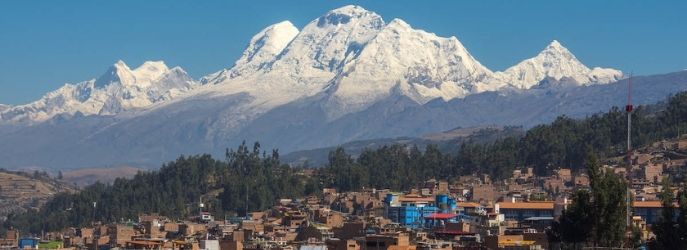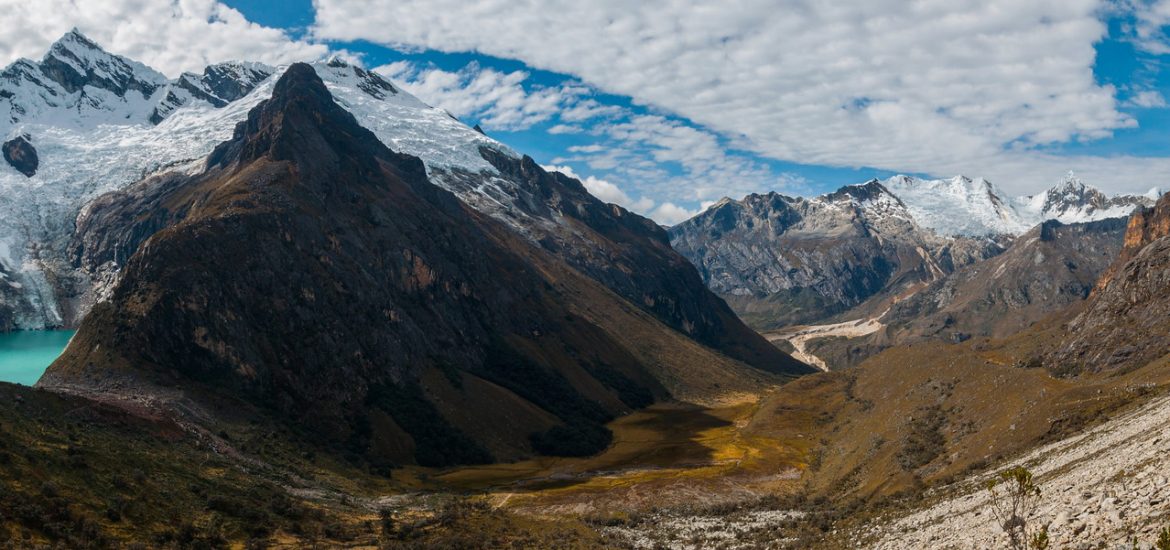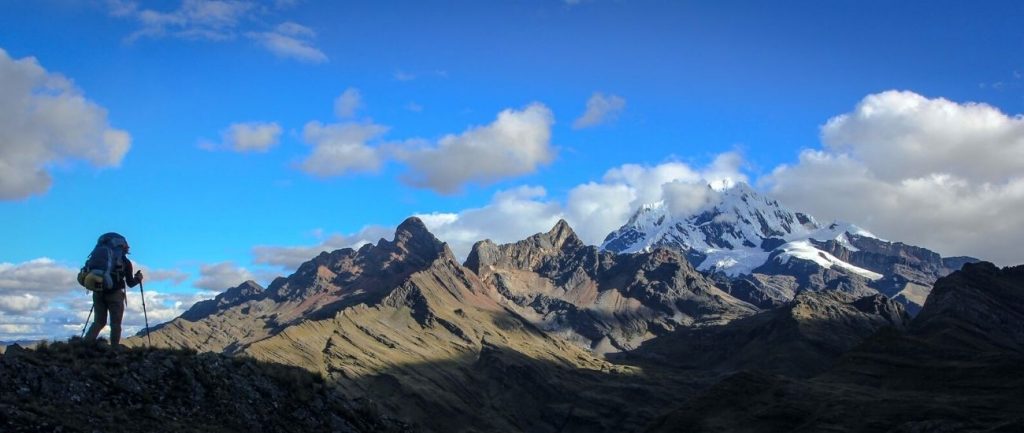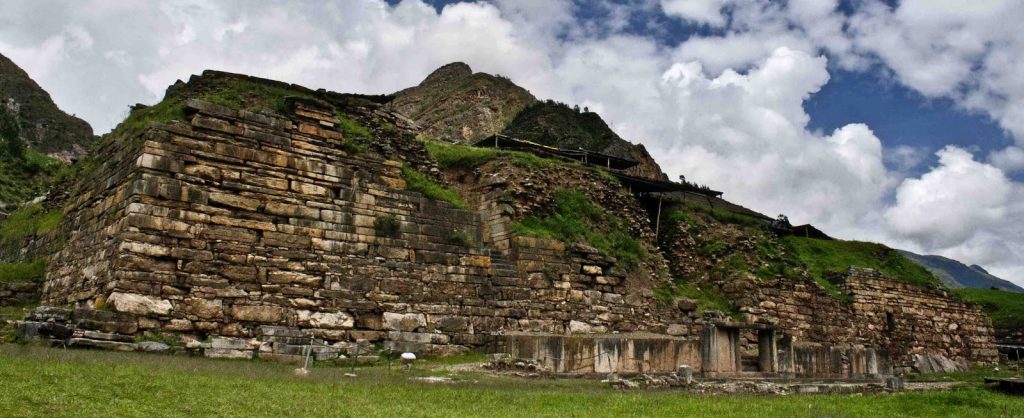If you are someone who loves adventure and unique landscapes, you may have heard of Huaraz, the trekking capital of Peru located in the central Peruvian Andes.
That’s why El Parque Nacional de Huascaran (Huascaran National Park) offers the best trekking options, ranging from moderate level to demanding. If you’re up for the challenge, you should be prepared to handle the hard activities and the altitude.
This place is a major destination in South America and has a stunning landscape with snow-capped peaks and turquoise lagoons. Huascaran is a true heaven on Earth that should not be missed when visiting Peru.
Geology and Landscape
This park is remarkable for its striking landscapes. They were sculpted by tectonic action, glacial erosion, and volcanic eruptions. Huascarán National Park is well known for them.
The Cordillera Blanca, one of the largest mountain ranges in the Andes, and the highest tropical mountain range in the world dominates the park. It is distinguished by its many glacial lakes, deep valleys, and tall summits.
This National Park includes 27 mountains over 6,000 meters tall and is the highest peak in Peru, at 6,768 meters above sea level, the fourth-highest mountain in South America.
As a result, the park is known for having the world’s tallest tropical mountains. Mount Huascarán, which rises to an amazing 6,768 meters (22,205 feet) above sea level, is the focal point of the park. The area’s stunning landscape is made even better by the presence of other towering peaks. These peaks include Huandoy, Chopicalqui, and Alpamayo.
Huascaran National Park covers much of the Cordillera Blanca, This range is in the Andes of northern Peru’s Ancash province. Huascaran Park has a lot of biodiversity, such as hundreds of plant types, thousands of animals, and natural marvels.
The park spans 340,000 hectares. It includes parts of Huaylas, Yungay, Carhuaz, and Huaraz. Also, parts of Recuay, Bolognesi, Huari, Asunción, Mariscal Luzuriaga, and Pomabamba.
The Cordillera Blanca in Huascarán National Park has over 700 glaciers. They greatly affect the park’s scenery, the glaciers melt and flow downhill. They give the town freshwater and also make stunning blue lakes and rivers.
The park has many types of land. It includes alpine meadows, lush cloud forests, and puna. Puna are high-altitude Andean grasslands. Many types of plants and animals live here, they are adapted to survive in some of Earth’s harshest settings.
Biodiversity
Huascarán National Park has extraordinary biodiversity. The park is a sanctuary for ecologists, botanists, and animal lovers alike. It houses over 120 species of animals, birds, reptiles, and amphibians, and 800 species of plants.
The Andean condor is the world’s largest flying bird. It is a symbol of the Andes mountains and one of the park’s most recognizable inhabitants. There are Andean geese, huge hummingbirds, and torrent ducks. These are a few more special bird species that flourish in the park’s many ecosystems.
Huascarán National Park has an equally amazing array of mammals. They include the Andean spectacled bear, puma, Andean fox, and vicuña. These animals wander the high-altitude woods and grasslands.
This region also hosts endemic rodents that have adapted to the harsh Andean climate. Examples include the chinchilla rat and the Andean mountain cavy.
Huascaran also has nearly 700 species of vascular plants. They exist within their limits showing the diversity of their plant life. The puna is dominated by shrubs, cushion plants, and high-altitude grasses, while the mountain forests have trees, queñua, and Andean cedars.
The special vegetation found in the páramo, or high-altitude wetlands, is suited to wet soils. One such plant is the unusual “Puya de Raimondi” also called, The Queen of the Andes”. This plant resembles enormous daisies and is key for controlling water flow and stopping soil erosion.
Cultural Heritage
Huascarán National Park is rich in cultural legacy in addition to its natural beauty since indigenous populations have maintained a close relationship with the land and its resources. There is evidence of pre-Columbian civilizations in the area that date back thousands of years, including the Chavín and Recuay cultures.
The Quechua and Huánuco are two of the indigenous communities that still live in the valleys around the park today, maintaining customs that are closely connected to the land and its resources. at the high Andean plains, llama and alpaca herding is performed, while at the lower elevations, terraced fields cultivate basic crops such as potatoes, corn, and quinoa. Agriculture and farming are still important to these communities.
The park has countless ancient sites. They are spread out over the area. T showing the park’s cultural value. The most well-known is the UNESCO World Heritage Site Chavín de Huántar archeological complex.
The Chavín civilization was built in 900 BCE. This ancient ceremonial site has remarkable stone sculptures, underground halls, and plazas. They give insights into the creative and religious traditions of pre-Columbian Andean cultures.
Conservation Challenges and Efforts
Huascarán National Park confronts many conservation issues. The government still protects it but faces habitat loss, poaching, land encroachment, and climate change.
Another challenge is global warming, making the Cordillera Blanca’s glaciers retreat faster, raising the risk of avalanches and glacial floods. Mining, infrastructure, and agriculture threaten the park. They harm its habitats and species.
These make the issues worse threatening the park’s long-term health and the community’s welfare. To fix these issues, many governments, communities, and conservation groups have stepped in and accomplished this by working on projects.
The initiatives safeguard the cultural and living heritage of Huascarán National Park mitigating the consequences of and keeping an eye on environmental changes. These projects include community-based conservation.
So Many Hikes in just one Place
Keep in mind that Peru has two main seasons, in case you visit Peru between October and March is the rainy season. During this season, expect high temperatures and cloudy days. Depending on the month, you might find heavy rain.
On the other side, the dry season is from April through September. It brings cold and many sunny days but much larger crowds than the rainy season. Now, we’ll introduce you to some popular destinations in this beautiful park.
La Laguna 69 Is one of the most popular outdoor pursuits in this area. This odd body of water is at 4,504 meters above sea level. It is fed by a waterfall that formed during the thaw.

It takes around five hours to hike to reach this remarkable natural sight. This blue lagoon is magnificent, we’re sure its surroundings will astound you. A wonderful reward after all that effort!
One of the site’s main attractions is the Pastoruri Glacier, which is located on the northern face of Pastoruri Mountain. However, climate change made the road to the glacier off-limits. This was from 2007 to 2011.
It doesn’t require much fitness to finish. But, the Nevado Pastoruri is a popular tourist spot. Getting to the summit is easy, yet, we recommend traveling with an approved guide.
Llanganuco Lake is the union of two twin lakes, Orconcocha, and Chinancocha. The mountains around them are called Yanapaccha, Huandoy, Pisco, Hauscarán, and Chopicalqui. They have the same turquoise tint as Laguna 69 thanks to the glacier.
These twin lagoons are similar. They are well-known for the lush plants that grow around them. You won’t regret taking the time to see these natural treasures if you happen to be in Huaraz!
Laguna Paron is the biggest lagoon in the Cordillera Blanca, located in the Ancash region. It lies at an elevation of 4,185 meters above sea level and is 32 kilometers from Huaraz.
Laguna Paron became a National Heritage Site in 2010. This lake offers a view of the snow-capped mountains that include Artesonraju, Piramide, Huandoy, Pisco, Chacraraju, and Paria.
The Chavin de Huantar Archaeological Site is one of Peru’s most important sites from ancient times. It dates back to 1500 B.C. The Chavin civilization purportedly built it as a religious center. People from across the nation would travel there to make sacrifices and requests to the gods.
The two temples made up the Chavin de Huantar Archeological Site. These temples have some damage due to the unstable ground, these days, you may go two hours outside the city to Huaraz to see these historic temples.
The Ancash area follows the Rio Santa River through the Callejon de Huaylas (Santa Valley in English). Callejón de Huaylas is known for its natural landscape, the Cordillera Blanca, and the Cordillera Negra surrounding it.
The latter has mountains as high as 5,100 meters. Most visitors come for adventure tourism. This includes mountain biking, paragliding, rock climbing, canopy tours, and trekking.
The Callejón de Huaylas lies between two large mountain ranges. For instance, the Cordillera Blanca gets its name from its tall, snow-capped peaks. Some of them rise over 6,000 meters, the highest point in the Huascaran Range. Across the valley is the Cordillera Negra.

Honorable Mentions
Honcopampa is an archaeological site, divided into two sections. The first is the religious sector. The second is a residential area with terraces, plazas, and other buildings.
Large, gray, carved stones were used to build its walls; smaller, darker-colored pebbles covered the mortar between the stone
Easily one of the easier walks from Huaraz, Laguna Wilcacocha is the ideal place to take in that splendor. You’re looking to visit a stunning part of the Andes.
Then, you’ll take on a harder walk. This deep green lagoon hike is perfect for acclimatization. But this lake is 3,745 meters above sea level. So, you should have visited Huaraz for at least a day or two before doing this activity.
Nevado Alpamayo Hike
Around six days and five nights are needed to go there and back. The track is tough. It passes through elevations over 5,300 meters. The World Scenic Photography Contest gave the title to Alpamayo. They named it the Most Beautiful Mountain in 1966. Hike Nevado Huascaran
Santa Cruz Trek
The Santa Cruz Trek is a tough climb. It crosses Peru’s Cordillera Blanca and goes through Huascaran National Park. The Santa Cruz is regarded as an excellent adaptation walk because it reaches a greatest elevation of 4,760 meters.
This is a 4-day trek. It rewards you with views of a blue alpine lake and breathtaking views from the 4,750-meter high pass. You also get a prime spot to see notable mountains in the area.
Do you want to travel off the beaten path? Well, we’ve got you covered! Viagens Machu Picchu is concerned with giving you all you need for an authentic trip.
This is while visiting our beautiful country. See our trip packages and come see Peru in a way unlike anything else!




